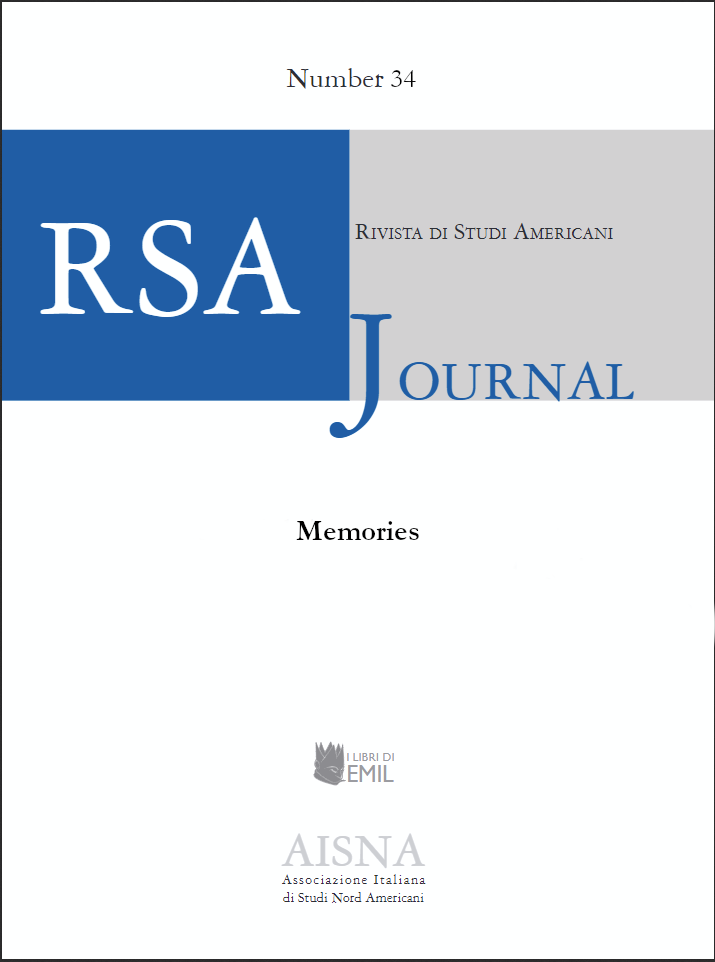Breaking Bread and Sharing Dreams with the Other-than-human
Extinction and Multispecies Community in Lydia Millet’s “How the Dead Dream”
DOI:
https://doi.org/10.13135/1592-4467/8380Parole chiave:
extinction, multispecies community, Lydia Millet, posthumanismAbstract
Lydia Millet’s novels have gained momentum within environmental discourses since they often prove how “looking outside the human is what gives human life its meaning” (Millet). In this article, I analyze How the Dead Dream, the first novel of a trilogy published almost ten years after J.M. Coetzee’s The Lives of Animals (2001), the novella written for the 1997-1998 Tanner Lectures at Princeton University. Millet’s book, I argue, is a direct reply to Coetzee’s invitation to reconsider the place of the human vis-à-vis the other-than-human within the complex framework of posthumanism. This implies a recession of the onto-epistemological and ethical divide among species that saturate popular discourses on extinction. Drawing on material ecocriticism and, especially, on Stacy Alaimo’s research (Exposed, 2016), I investigate and critique different forms of epistemological impermeability, such as the assumed domestic safety, cleanness, and the sovereignty of the (male) Western subjectivity. By tracing the radical transformation of T., the main character in the book and rapacious speculator, I demonstrate how the aesthetic and the ethical intersect in the narration of this story of coevolution and cohabitation.
##submission.downloads##
Pubblicato
Fascicolo
Sezione
Licenza
Avviso sul Copyright
RSAJournal applica una licenza CC BY-NC-ND a tutti i suoi contributi. Questa licenza consente agli utenti di copiare e distribuire il materiale in qualsiasi supporto o formato solo in forma non adattata, per scopi non commerciali e a condizione che venga esplicitato/a l'autore/autrice dell'opera. CC BY-NC-ND include i seguenti elementi:
- BY: L'autore deve essere riconosciuto come tale.
- NC: Sono consentiti solo utilizzi non commerciali dell'opera.
- ND: Non sono consentite opere derivate o adattamenti dell'opera.
Gli autori che pubblicano con questa rivista accettano i seguenti termini:
- Gli autori conservano il copyright e tutti i diritti di pubblicazione per i loro contributi alla rivista.
- Gli autori concedono alla rivista il diritto di prima pubblicazione in base alla licenza internazionale Creative Commons Attribution-NonCommercial-NoDerivatives 4.0, che consente ad altri di condividere l'opera non modificata per scopi non commerciali a condizione che venga esplicitato/a l'autore/autrice dell'opera e la sede di pubblicazione iniziale (questa rivista).
- Gli autori sono in grado di stipulare accordi contrattuali separati e aggiuntivi per la distribuzione non esclusiva della versione pubblicata dalla rivista (ad esempio, per inserirla in una repository istituzionale o pubblicarla in un libro), con l'indicazione che il contributo è stato precedentemente pubblicato in RSAJournal.




